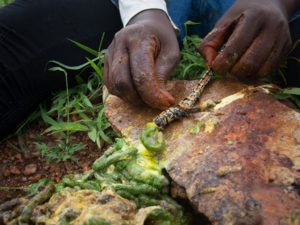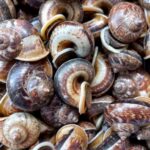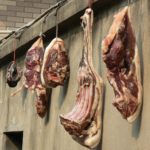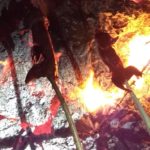Mopane worms (Instars of Gonimbrasia belina) are mainly found on Mopane trees (Colophosperma mopane) but also on Wild Syringa (Burkea africana), Zebrawood (Microberlinia Brazzavillensis) and others. However, Mopane trees are a highly dominant species in climates and areas suitable for them. A concentration of Emperor moths occurs in such areas, and vast numbers of Mopane worms are associated. Other Gonimbrasia caterpillar species from D.R. Congo were presented in an article here and there on this website.
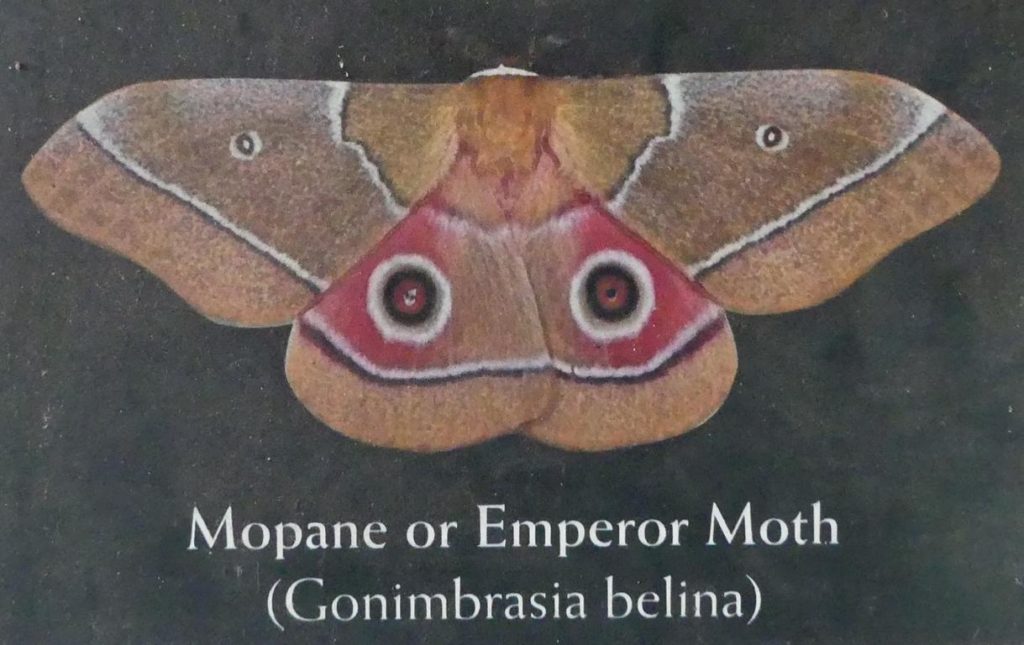
Distribution of Mopane worms
The densest distribution of Mopane worms is in areas dominated by Mopane trees. Mopane trees prefer poor soils, harsh climatic conditions, and low nutrients. No grass is growing anymore in pure Mopane veld, as Mopane trees are growing so dense. Such situations occur in norther-eastern parts of South Africa, southern Zimbabwe, northern parts of Namibia and Botswana, and parts of Mozambique, Zambia, and Angola. Generally speaking, due to climate change, the Mopane belt is moving southwards in these areas at a speed still not agreed upon by scientists. Therefore, traditions and cultural implications for local populations will continue to change.
Life cycle
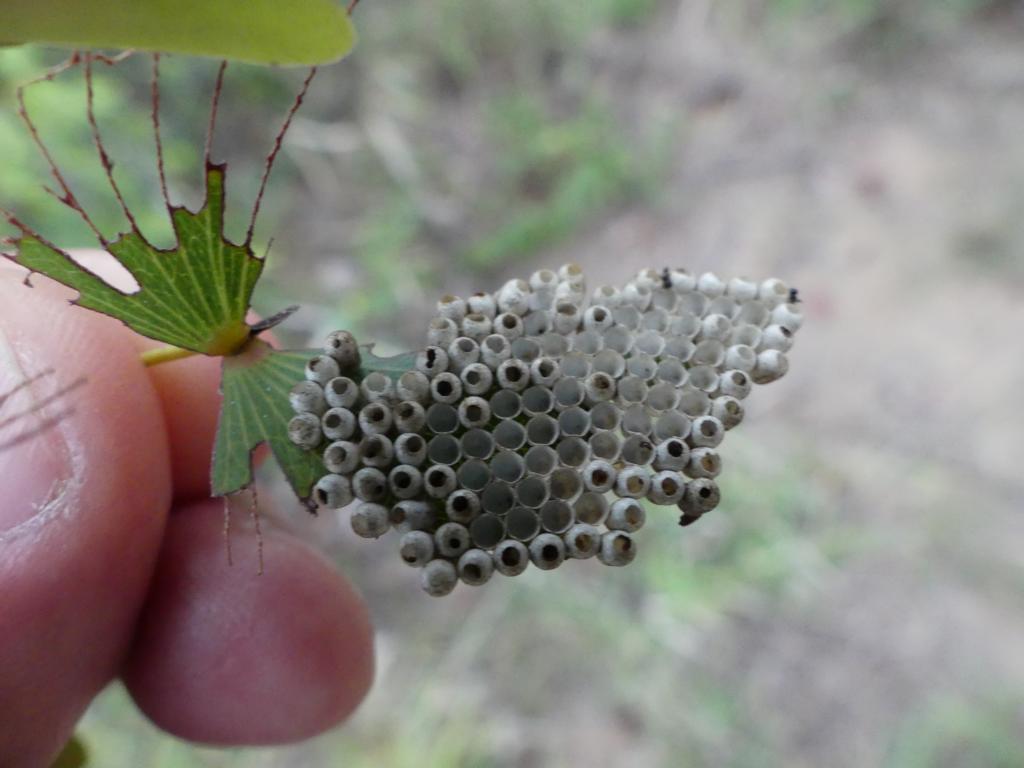
A Mopane worm life cycle is quite interesting. The female Emperor Moth lays eggs on a leave or twig of the host tree. After hatching around October, the caterpillars undergo four molding stages through five larval instars.
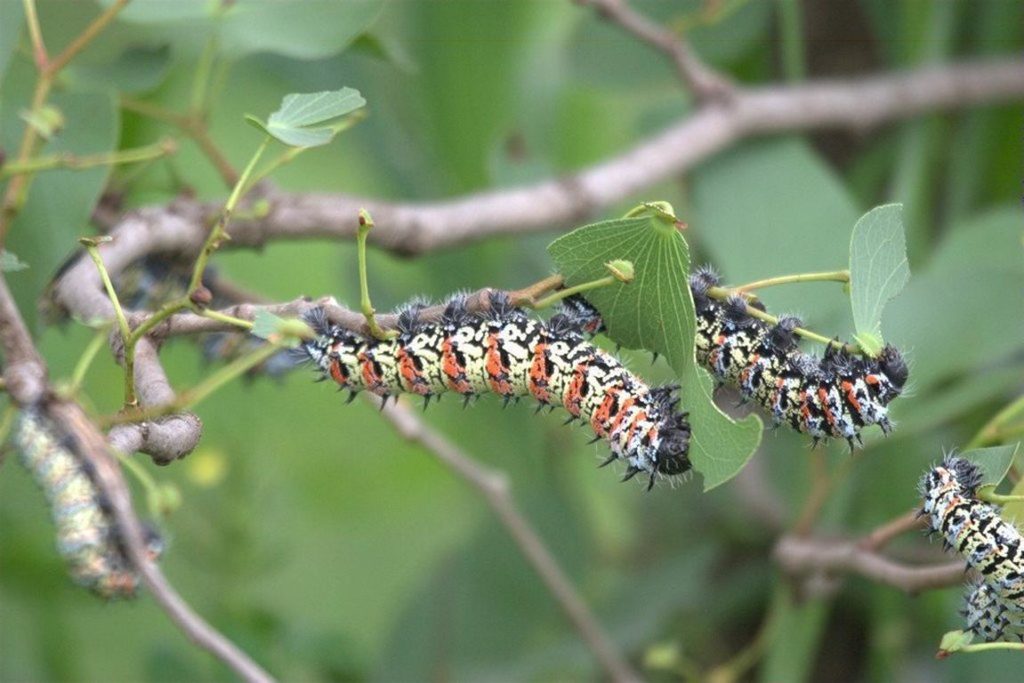
During that time, the caterpillars consumed nearly all of the Mopane leaves in the trees. And by their defecations, they create a dung carpet, which gets quickly recycled into the ground. From February onwards, pupation occurs over wintertime for 6 – 7 months. And around September, the moths will fly out. Both males and females will only live for a few days, during which they are mating and, after that, will die. And the life cycle starts from the beginning again.
Mopane worms as human food
Mopane worms have been a delicacy for the local population for millennia but should only be consumed by persons with no allergic reaction to penicillin.
Locals collect them in great numbers when the caterpillars are out in summertime. After harvesting, they squeeze the internal contents of the caterpillars from head to backside out of the body. After that, they wash them and either briefly roast them on a grill and dry them or directly dry them for later use. Roasting is done to sing off the stingy hairs on the caterpillar’s body. The remaining thorny spikes make chewing the worms in the mouth unpleasant.
.
Preparation of Mopane worms by Ndebele people
Ndebele (Matabele) in southern parts of Zimbabwe roast them so that they light a big fire and make a hole in the middle of the embers. That’s a ‘ring of fire’. Afterward, they put the cleaned Mopane worms inside this ring of embers, let them sear off their hairs, and cook them evenly. Burning them will be avoided by constantly shuffling them around. This fire must be intense, as the caterpillars contain lots of water. After that, the Mopane worms are taken out of the fire and scrubbed with fresh leaves to remove all remaining hairs. But still, the spikes remain. After this preparation, they are getting finally sun-dried and put into storage.
Cooking Mopane worms
There are many cooking methods besides eating them raw. The most popular methods are to cook them with onions and tomatoes or roast them with a bit of oil or fresh cream. We did it the traditional Ndebele way by roasting and eating them as a crunchy snack.
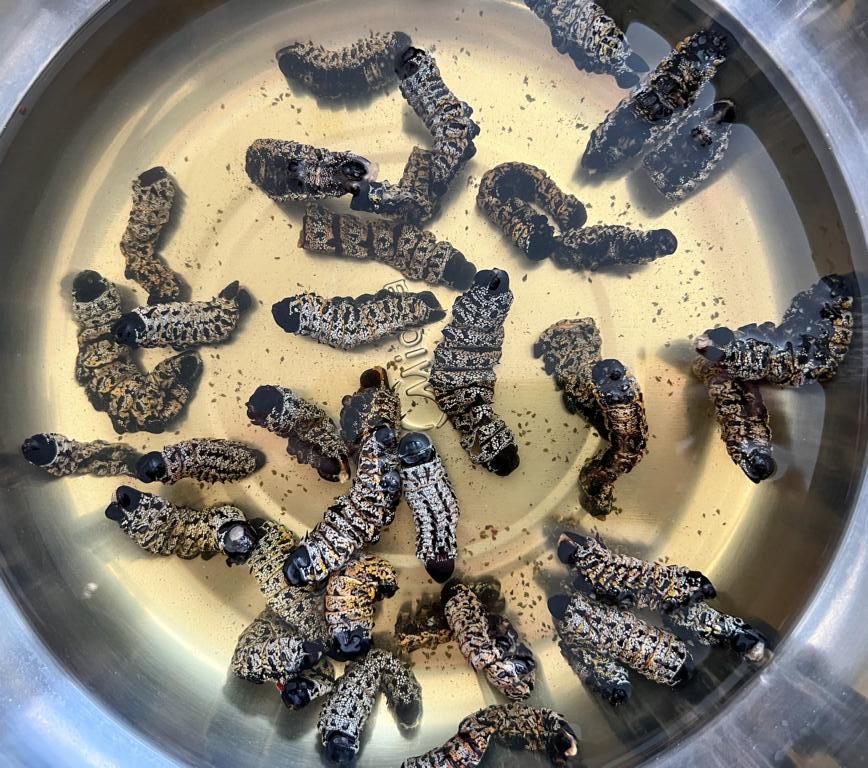
Before use, the dried Mopane worms have to be reconstituted again. Put them into a bowl and cover them generously with boiling water for about 20 minutes. After that, they have to be cleaned with this water and stretched. In our case, there was no sand or debris on them, and the inside was nearly clean of foreign matter.
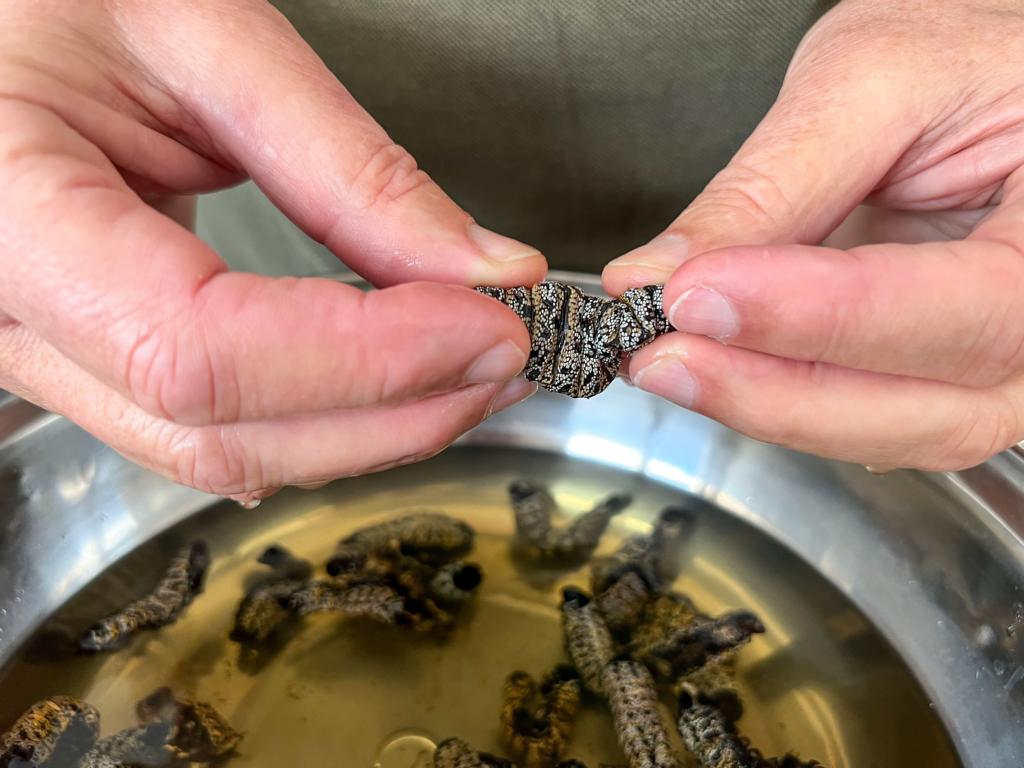
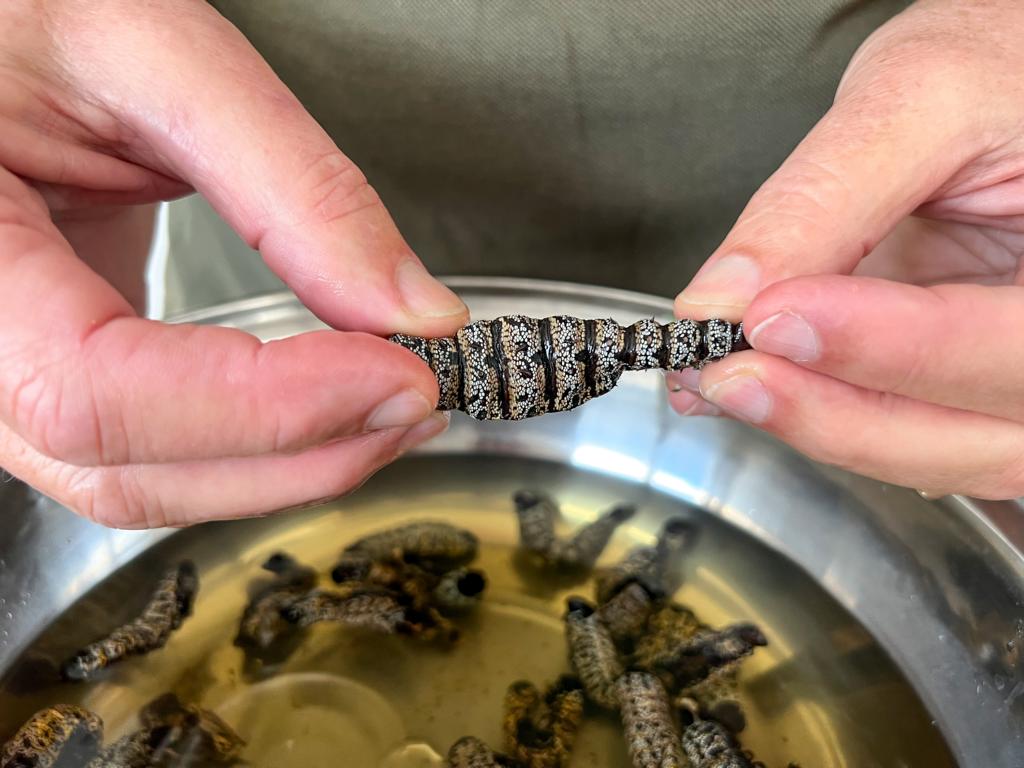
But every caterpillar segment must be stretched out to make them flexible and chewable again. After initial cleaning in the veld, many caterpillars contract their body segments into a tight bunch. And when being dried, they end up as a hard clump of caterpillar. Stretching out the reconstituted bodies will make them easily edible. This stretching can sometimes be painful, as the body spines on them are still fully intact. And to my knowledge, there is no practical way to remove them.
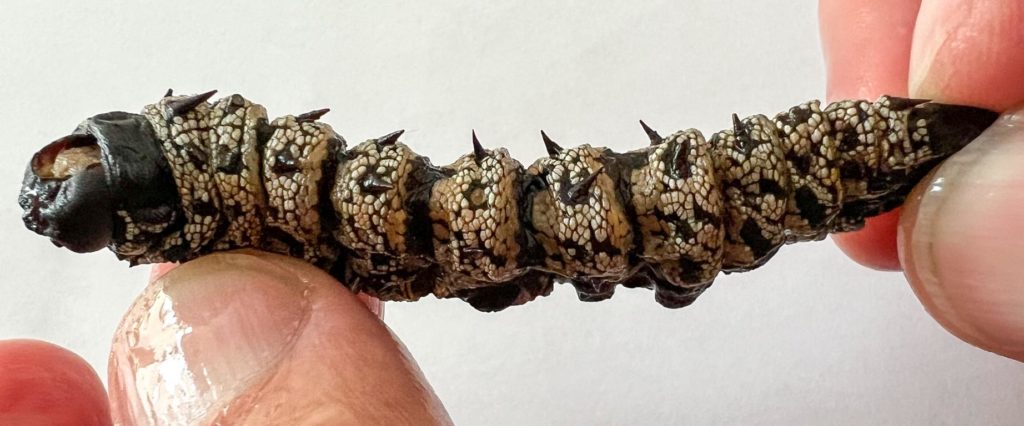
The easy part is to fry them in oil—Ndebele people like to use fresh cream instead—and salt them when they are nearly ready to eat.
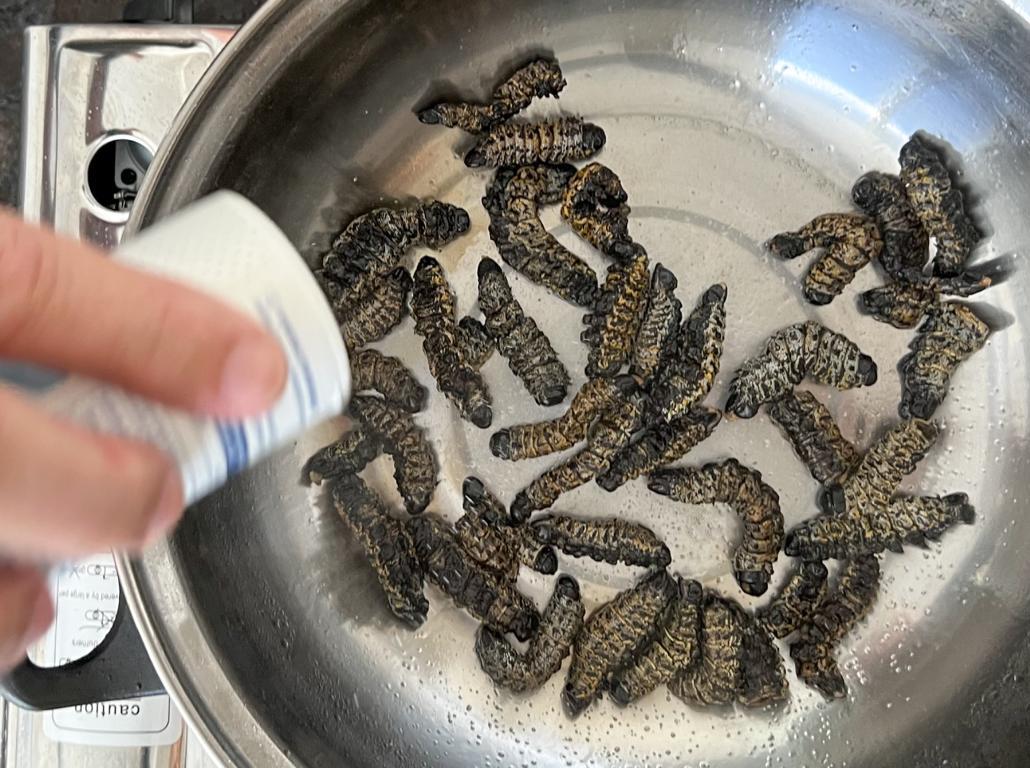

Eating- and nutritious value of Mopane worms
As mentioned above, the worms were, in our case, clean on the inside, and there were no traces of Mopane leaves or other foreign matters to be seen. The prominent texture when eating them was the tough outside skin with pleasant, chewy matter inside. The worms tasted like sweet meat, intensively flavored with a tea scent. For me, it subjectively tasted like Pu-erh tea in China. That’s mainly because of the high content of phenols and tannins in their favorite food, Mopane leaves.
Tswana people remove the black-colored head before eating the caterpillars. Every worm has an average of 18% chitin content (head, backside, spines, etc.), which blocks digestive enzymes from accessing protein and lipid substrates and thereby reduces the utilization of these nutrients. Therefore, these black matters should be removed before eating, if possible.
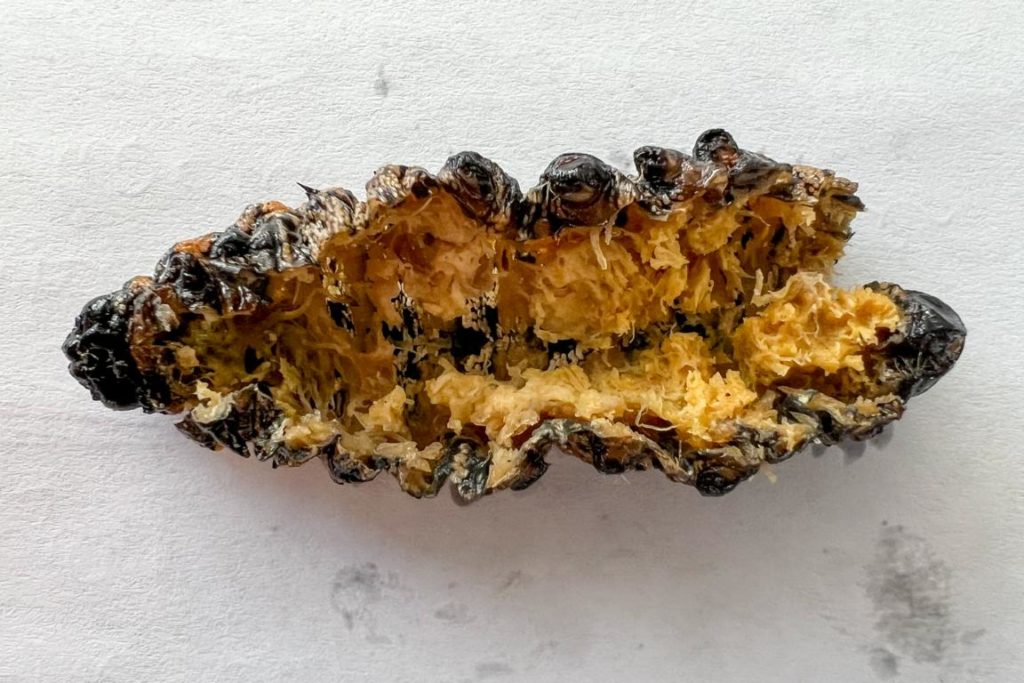
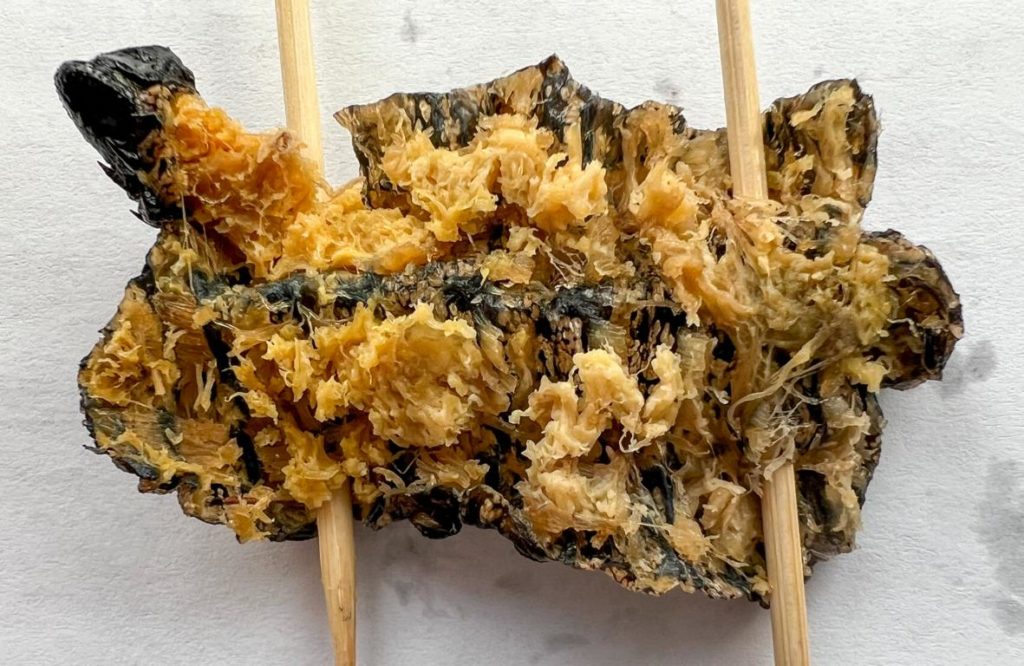
According to this source, 100 g of Mopane worms have the following nutritional value:
- Energy value: 124 kcal
- Proteins: 58% dwb (dry weight basis)
- Fat: 15% dwb
- Carbohydrates: 8% dwb
- Minerals: 1.34% dwb
- Fiber incl. chitin: 17.7% dwb
These caterpillars are rich in protein and have significant amounts of fat (38% of fatty acids are saturated, and 62% are unsaturated) and fiber. As mentioned, the fiber content is highly antinutritional and should be removed before eating.
Lessons learned about Mopane worms:
- Mopane worms have five instar larval stages.
- After collection, their internal gut content has to be squeezed out.
- Cleaned Mopane worms must be roasted to remove irritant hairs on their body.
- There are two main styles of cooking them and a multitude of other recipes.
- After reconstitution, dried Mopane worms must be stretched to make them flexible.
- These caterpillars are rich in protein and fiber.
- Chitinous parts should be removed before eating.
More articles on this website about caterpillars can be found via the following links:
Edible caterpillars in D.R. Congo, Introduction
Edible caterpillars in D.R. Congo, Part 1
Edible caterpillars in D.R. Congo, Part 2
Edible caterpillars Nudaurelia sp.
Collection of edible caterpillars in D.R. Congo
Edible caterpillars for food in Congo
Stinging nettle slug caterpillar in Vietnam
Green caterpillars, called ‘Kaba’
.

